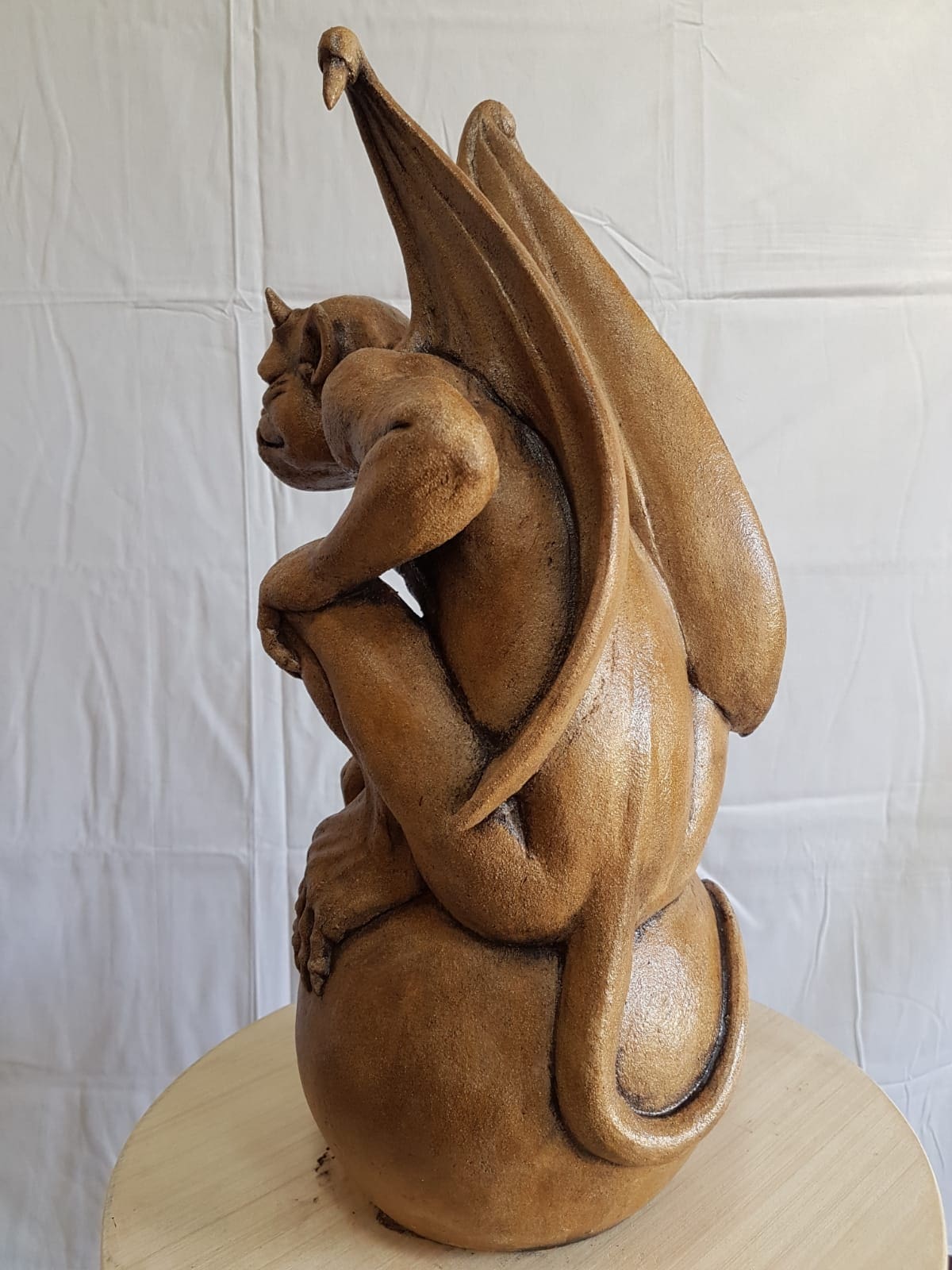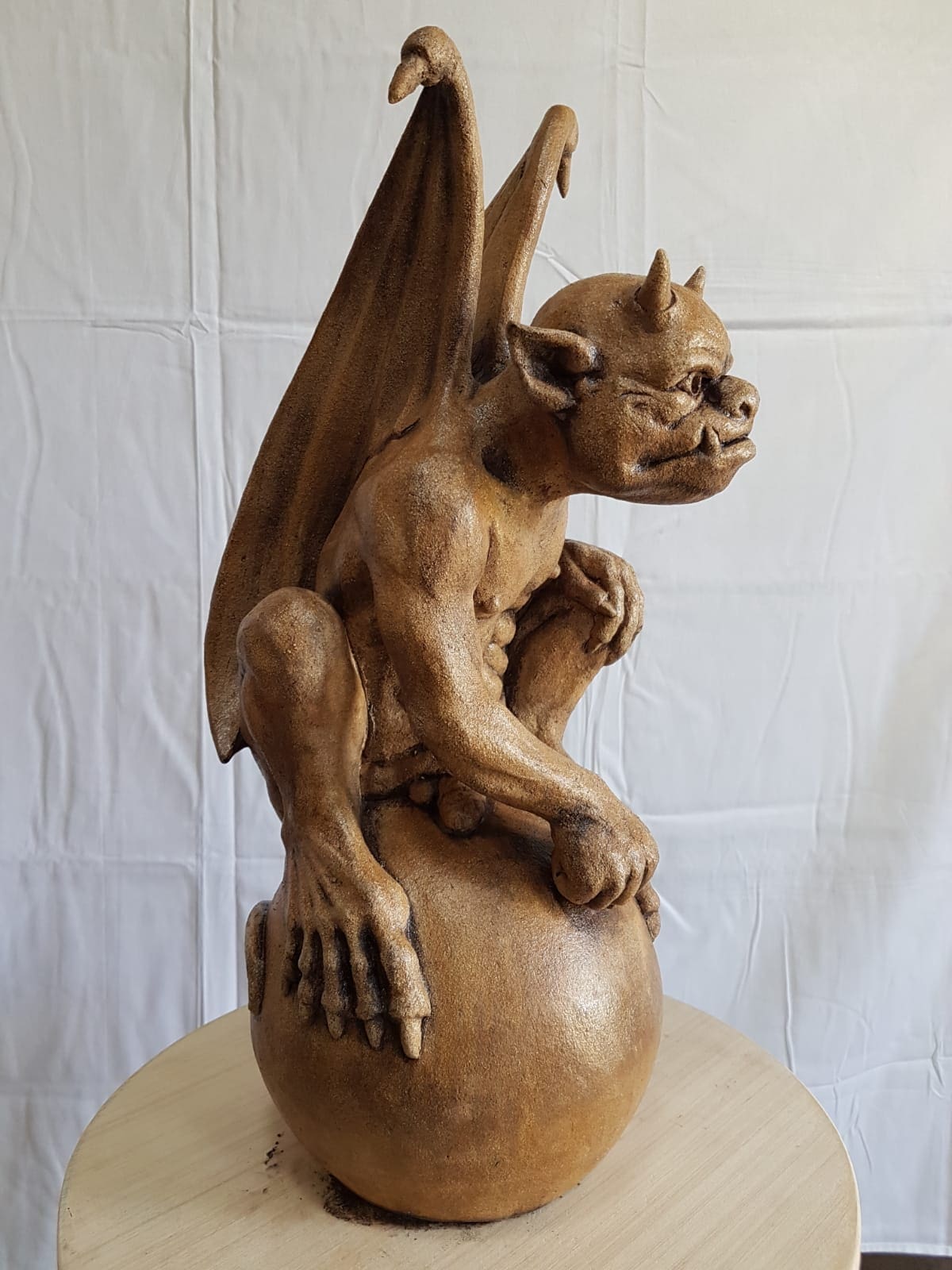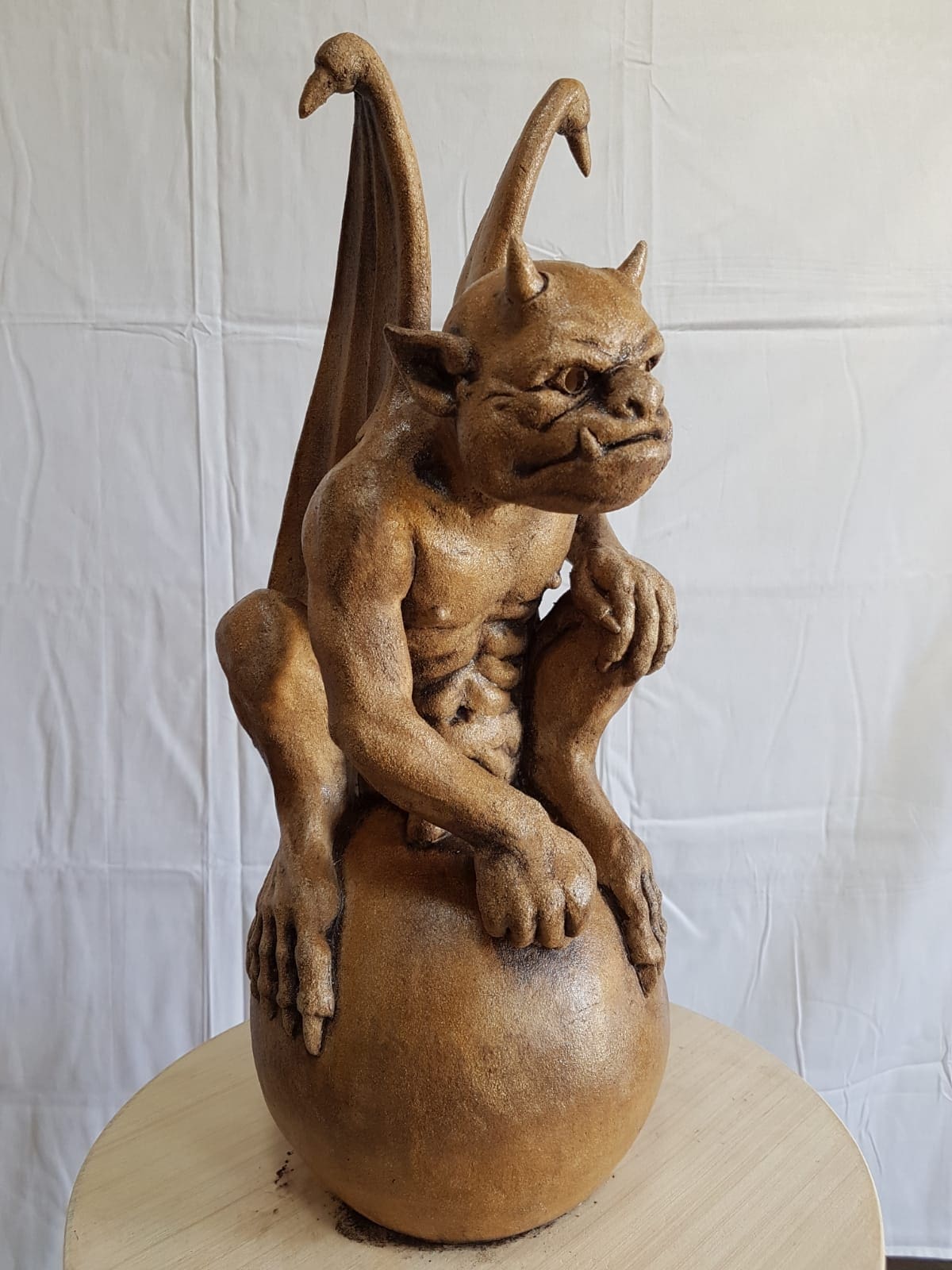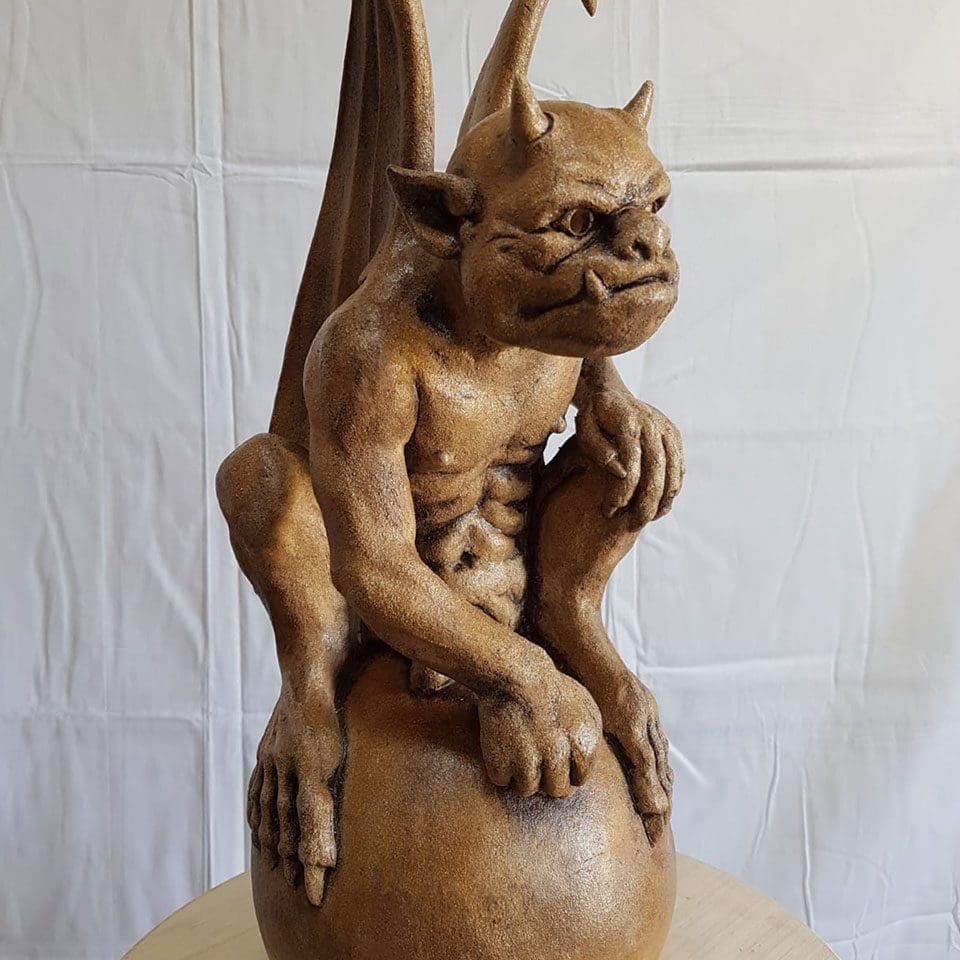Gargoyles and Goblins Sculpture Information
The inspiration for these pieces came from Stephen King’s novel Nightmares in the Skies. Their forms were inspired by images from F. Scott Fitzgerald’s Gargoyles and Grotesques. The Gargoyles were made from craft crank clay, which is ideal for outdoors.
These Gargoyles, once finished, were fired in a kiln. and can withstand temperatures of -40 to 1200 degrees without a blemish. They were inspired by European Gothic church architecture. They are ideally positioned in houses or gardens.
These Gargoyles are built on spherical balls which takes a day to model. This is due to the slow process of assembling the clay. Otherwise it would explode in the kiln. When merged with the sphere, the gargoyle becomes more durable.
Gargoyles – Some interesting facts
They first appeared in the 13th century, Gargoyles have served a practical purpose. They served as decorative water spouts. They were engineered to preserve stone walls. They did this by diverting the flow of rainwater outward from rooftops.
The word gargoyle derives from the French gargouille, meaning “throat”. This would appear to take its inspiration from the statues’ water-siphoning gullets. In fact the name comes from the French legend of “La Gargouille”. This was a fearsome dragon that terrorized the inhabitants of the town of Rouen.
Along with the above purpose, gargoyles were meant to scare parishioners. Most Medieval Europeans were illiterate. The clergy needed visual representations of the horrors of hell. This drove people to the sanctuary of the church. Placing gargoyles on the building’s exterior were a reminder. Evil dwelt outside the church, while salvation dwelt within.
There were still pagans in Western Europe at the time. The gargoyles were modeled after the creatures worshipped by these pagan tribes. They thought this would make their houses of worship appear more welcoming to them.
The name gargoyle dates back just a few centuries. The practice of crafting decorative, animal-themed drain spouts reaches back several millennia. Ancient Egyptians had a thing for lions, as did the Romans and the Greeks. The oldest gargoyle-like creation is a 13,000-year-old stone crocodile discovered in Turkey.
Arguably, the world’s most famous gargoyles are those found in Paris’ Notre Dame. These are the ones that most influenced the popular wings-and-horns image of the creatures. These gargoyles are not that old. They were part of an extensive restoration project in the mid-1800s.
Many gargoyles were fashioned after their builders and church elders. Cologne Cathedral in Germany features a gargoyle of the church’s long serving council member. In Lyon, France you can see a gargoyle modeled after the building’s construction manager. Because nothing says “thank you” like a hideous stone creature carved in your likeness!
Courtesy of: https://www.mentalfloss.com/article/88019/10-fearsome-facts-about-gargoyles
Return to: https://mckeanesculptor.ie/sculpture-gallery-including-dragons-portraits-gargoyles-and-plaques






